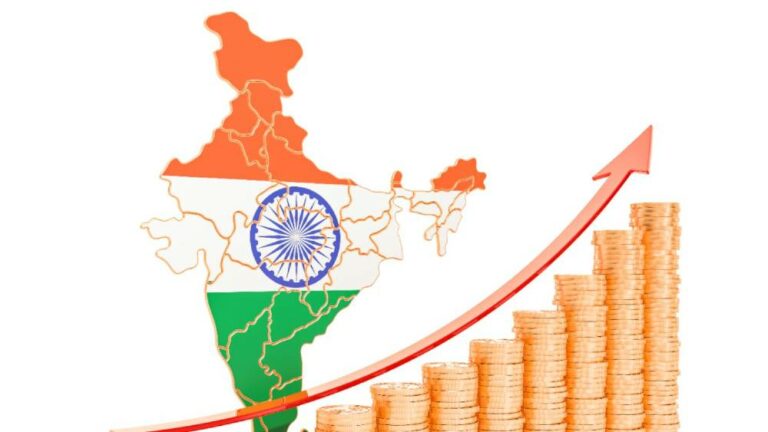Indian Economy is at Turning Point. GDP growth at 7.2 per cent in 2022-23 confirms that. India has already recovered from Covid-19 and Russia-Ukraine war. But India should acknowledge that its growth was on down-hill after 2016-17. During 2017-23, growth was barely 4.47 per cent on CAGR basis. In 2023-24, growth-target of 6.5 per cent might be difficult without reducing Trade-deficit (goods & services) to below 2 per cent of GDP which was 3.7 per cent in 2022-23. Trade deficit (net-import) is a direct loss of GDP.
Considering SWOT analysis, Indian Economy is at its turning point. India has latent growth potential of 8-10 per cent for two to three decades and become third largest economy. But the complacency might gradually result in a new normal growth-rate of 5 per cent in future, somewhat similar to pre-1991 era. That India cannot afford.
India is largest democracy. Its democratic institutions craft confidence among global-investors which is its biggest strength. It has large workforce of talented and educated youths and many of them have entrepreneurial skill. That is another big strength. Currently, Labour Participation Ratio (LPR) has slipped below 40 per cent; that must be restored to 2011 level at 52.9 per cent and gradually increased to 65 per cent plus as per global norms. Rising trade-deficit, depreciating-Rupee, slow-moving manufacturing, sluggish MSME, non-remunerative agriculture and inadequate infrastructures are crucial weaknesses. Those must be resolved.
Considering autocracy in China, rich nations are refraining further investment under their “China plus one strategy” which provides good opportunity for India. But it couldn’t leverage. That again needs introspection. Currently, many developed nations are facing historical inflation and might face temporary recession due to aforesaid two crises. They are looking India as a “big-market” and “investment-destination”. India’s policies must avail this opportunity by attracting global-investment and technology-transfer for boosting domestic production.
India’s per-capita GDP at current-price is about $2600 against world-average of $13900. Richer nations can afford temporary recession and inflation. But India is facing severe “Job-crisis” and high “Income in-equality” clubbed with inflation. Hence, India’s growth model must be inclusive. Free-ration to under-privileged population could be an interim solution. But gradually they must be self-dependent by generating new-jobs and moderating inflation through appropriate policies.
I firmly believe that India’s growth-model, in its developing-phase, must rely upon “Export and
Investment led demand”. That will ensure consistent growth. Artificial boost to “consumption-led demand” without matching income is a misplaced choice. Also, model should be a “Mixed economy” comprising of large, medium, small and micro-enterprises. Agriculture must be remunerative through innovative policies with affordable fiscal-burden.
Growth Drivers/Targets
- Export should grow @ 15-20 per cent per-year and its share must exceed 25 per cent of GDP.
- Investment rate (GFCF) must be 36-40 per cent of nominal-GDP. Out of which, 12-15 per cent must be invested in infrastructure though a composite five-year plan. Incremental-capital output ratio (ICOR) must not exceed 4.20. High-spending in Green-energy needs review. Spending in Rail-infrastructure must supersede Road-infrastructure for reducing logistic cost. By and large, India must improve its economic efficiency enabling to compete in exports.
- Manufacturing share in GVA must be above 25 per cent. MSME Sector, particularly unorganized sector, needs major policy boost. Those are largest job-providers next to Agriculture.
- On external front, India must essentially become “Trade surplus” in Goods & Services and Rupee must be stable and then gradually appreciate.
- Repo interest rate must be restored to 4 per cent, as prevailed in 2020-21. Inflation in India is “cost-push inflation” having no linkage with interest rate. Yes, lower taxes on energy and minerals could help.
- There should be quarterly survey on Jobs and MSME development for policy corrections.
- As per past-data during 2002-12, aforesaid targets are realistic. However, this needs second series of structural reforms surpassing 1991 reforms. That will unlock its growth potential. However “Unity & Team-spirit” among all stake-holders is a “Key to Success”.
Exports
Cost of basic inputs such as CAPITAL, ENERGY, LOGISTICS and MINERALS, must be reduced. This depends upon the whole gambit of policies and regulations and not upon producers alone. During interim-period, export incentives may be considered in a calibrated manner. Export potential in Service-sector such as, Tourism, Health, Education, Consultancy in various areas such as legal, accounting, engineering etc., must be encouraged. Conventional exports such as, agriculture, herb, processed-food, apparels, handicrafts, jewelleries and leather should also be increased. Export of minerals is a misplaced choice; that must be stopped and preserved for future.
Investments
Besides cheaper credits, business and taxation laws must be eased gaining confidence among entrepreneurs. However, domestic financial-savings are not enough for financing investment needs. Hence, dependency upon global-investors will continue. For which, India must arrest Rupee depreciation, as done during 2002-2012. Government investment in few infrastructure projects must be leveraged 4/5 times through SPV and joint participation with private-sector. And, Railway must be converted to a listed PSU. It is investment hungry for building capacity. However, India should refrain from private-monopoly.
Manufacturing & MSME Sector
Manufacturing is riskier business compared to services. Hence, during temporary bad-cycle; India must allow restructuring of bank-loans and easement of NPA norms compared to developed-nations. Besides this, India needs quick statutory approvals and land allocation. Next to Agriculture, MSME is the largest job-providers. After 2016, its growth might be negative; that has caused historical fall in LPR and un-employment. No doubt, MSMEs are cost-inefficient. Few tax-incentives and liberal-credits will revitalize this sector, particularly micro and small-units. Many of them will graduate and become medium and large in due course. Policy support to MSME and Agriculture shall reduce rising unemployment, inequality and poverty. It is crucial in developing phase. Simultaneously, India also needs cost-efficient large-units.
External Front
No doubt, India’s Forex reserves are in comfortable range of 15-17 per cent of GDP. But that increases international liability since it is not from trade-surplus. In past 2 years, Trade-deficit has been about 2.6 per cent and 3.7 per cent of GDP. India must become “Trade-surplus”. By this, Rupee shall stabilise and gradually appreciate. At-least, “Current-account deficit” is not acceptable. India must reduce import of Gold and energy by using all policy-tools. It must spend heavily on Oil, Gas and Mineral explorations.
















